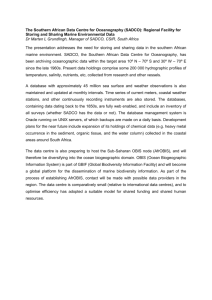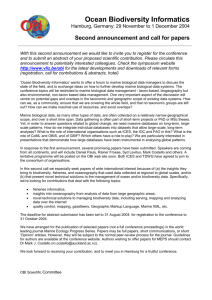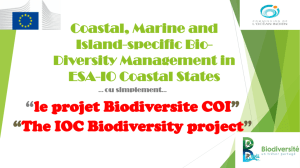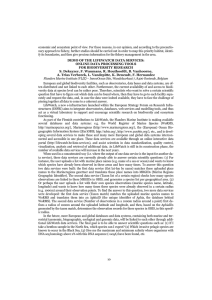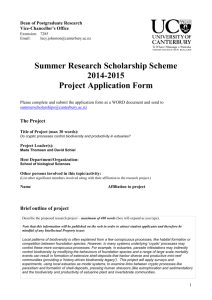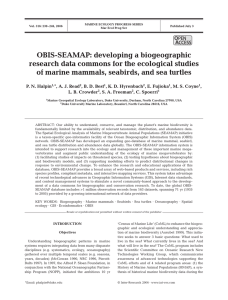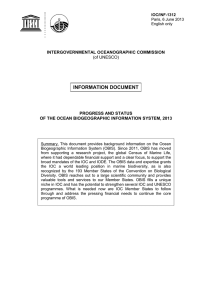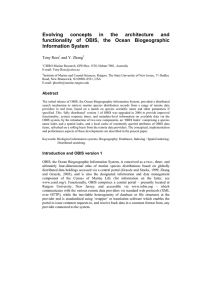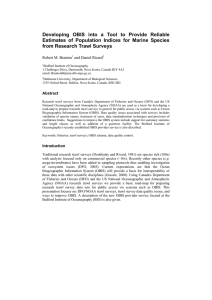Document 11891511
advertisement
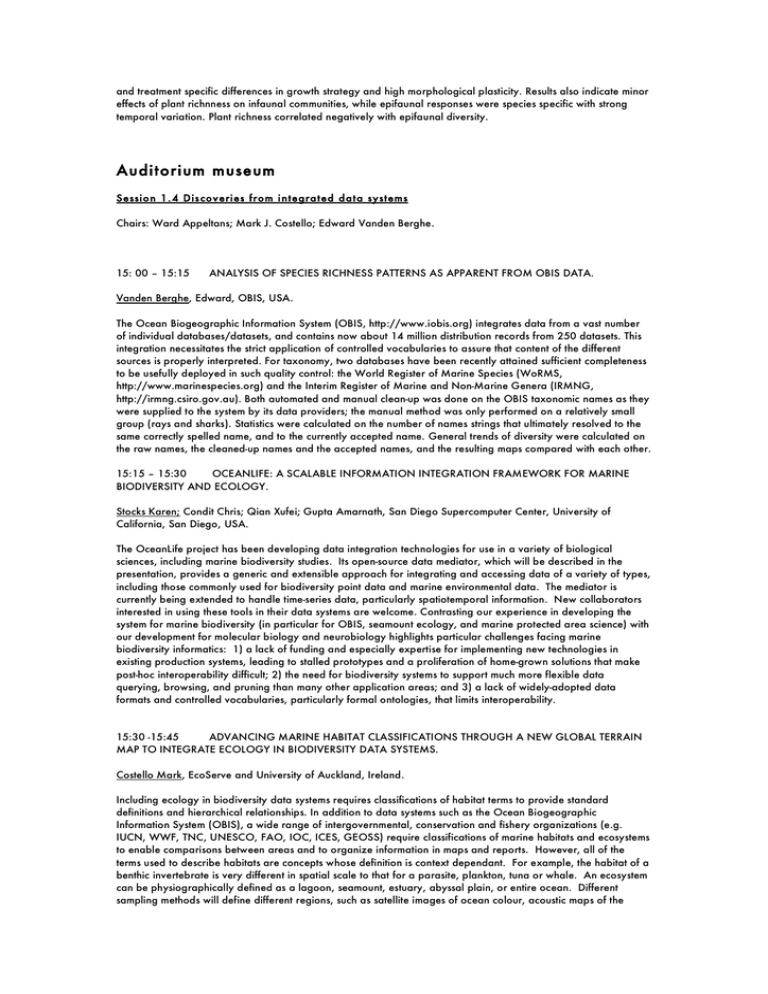
and treatment specific differences in growth strategy and high morphological plasticity. Results also indicate minor effects of plant richnness on infaunal communities, while epifaunal responses were species specific with strong temporal variation. Plant richness correlated negatively with epifaunal diversity. Auditorium museum Session 1. 4 Dis cov eries from i ntegrated data systems Chairs: Ward Appeltans; Mark J. Costello; Edward Vanden Berghe. 15: 00 – 15:15 ANALYSIS OF SPECIES RICHNESS PATTERNS AS APPARENT FROM OBIS DATA. Vanden Berghe, Edward, OBIS, USA. The Ocean Biogeographic Information System (OBIS, http://www.iobis.org) integrates data from a vast number of individual databases/datasets, and contains now about 14 million distribution records from 250 datasets. This integration necessitates the strict application of controlled vocabularies to assure that content of the different sources is properly interpreted. For taxonomy, two databases have been recently attained sufficient completeness to be usefully deployed in such quality control: the World Register of Marine Species (WoRMS, http://www.marinespecies.org) and the Interim Register of Marine and Non-Marine Genera (IRMNG, http://irmng.csiro.gov.au). Both automated and manual clean-up was done on the OBIS taxonomic names as they were supplied to the system by its data providers; the manual method was only performed on a relatively small group (rays and sharks). Statistics were calculated on the number of names strings that ultimately resolved to the same correctly spelled name, and to the currently accepted name. General trends of diversity were calculated on the raw names, the cleaned-up names and the accepted names, and the resulting maps compared with each other. 15:15 – 15:30 OCEANLIFE: A SCALABLE INFORMATION INTEGRATION FRAMEWORK FOR MARINE BIODIVERSITY AND ECOLOGY. Stocks Karen; Condit Chris; Qian Xufei; Gupta Amarnath, San Diego Supercomputer Center, University of California, San Diego, USA. The OceanLife project has been developing data integration technologies for use in a variety of biological sciences, including marine biodiversity studies. Its open-source data mediator, which will be described in the presentation, provides a generic and extensible approach for integrating and accessing data of a variety of types, including those commonly used for biodiversity point data and marine environmental data. The mediator is currently being extended to handle time-series data, particularly spatiotemporal information. New collaborators interested in using these tools in their data systems are welcome. Contrasting our experience in developing the system for marine biodiversity (in particular for OBIS, seamount ecology, and marine protected area science) with our development for molecular biology and neurobiology highlights particular challenges facing marine biodiversity informatics: 1) a lack of funding and especially expertise for implementing new technologies in existing production systems, leading to stalled prototypes and a proliferation of home-grown solutions that make post-hoc interoperability difficult; 2) the need for biodiversity systems to support much more flexible data querying, browsing, and pruning than many other application areas; and 3) a lack of widely-adopted data formats and controlled vocabularies, particularly formal ontologies, that limits interoperability. 15:30 -15:45 ADVANCING MARINE HABITAT CLASSIFICATIONS THROUGH A NEW GLOBAL TERRAIN MAP TO INTEGRATE ECOLOGY IN BIODIVERSITY DATA SYSTEMS. Costello Mark, EcoServe and University of Auckland, Ireland. Including ecology in biodiversity data systems requires classifications of habitat terms to provide standard definitions and hierarchical relationships. In addition to data systems such as the Ocean Biogeographic Information System (OBIS), a wide range of intergovernmental, conservation and fishery organizations (e.g. IUCN, WWF, TNC, UNESCO, FAO, IOC, ICES, GEOSS) require classifications of marine habitats and ecosystems to enable comparisons between areas and to organize information in maps and reports. However, all of the terms used to describe habitats are concepts whose definition is context dependant. For example, the habitat of a benthic invertebrate is very different in spatial scale to that for a parasite, plankton, tuna or whale. An ecosystem can be physiographically defined as a lagoon, seamount, estuary, abyssal plain, or entire ocean. Different sampling methods will define different regions, such as satellite images of ocean colour, acoustic maps of the
